Stories of Giving Back
SPONSORED CONTENT
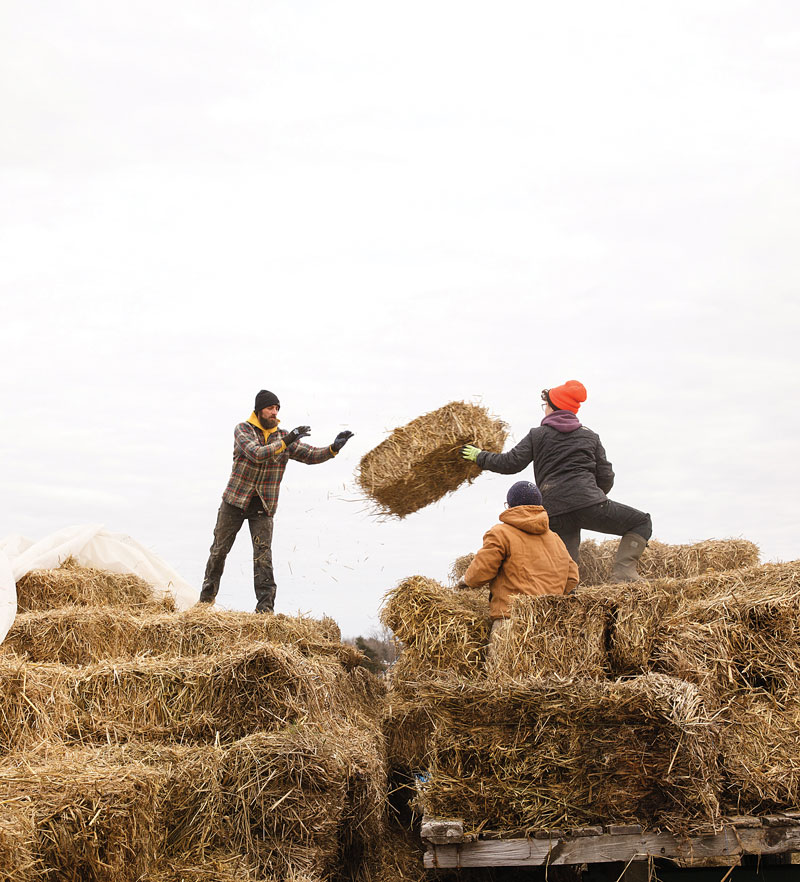
Photographed by Kristin Dillon.

Maine's Nonprofits
77 PERCENT
98,000+
$809 MILLION
4.7 BILLION
425,000
$160 MILLION
All Together Now

[cs_drop_cap letter=”O” color=”#ff3300″ size=”5em” ]ver the past eight years, Taryn and Ben Marcus have been coaxing nearly 70 acres of a former dairy farm back to life. Today, organic tomatoes, apples, and other crops thrive where weeds once grew. Each June, the pick-your-own strawberry patch abounds with kids hunting for the summer’s first juicy fruits. And inside the garnet-colored barn that they’ve transformed into Sheepscot General Store, the young couple is providing a nourishment that lasts long after the harvest is done.
Each morning, neighbors gather in the cafe for coffee and the day’s news, or to pick up a corned beef sandwich with sauerkraut made from veggies grown out back. It’s the only market for miles, and along with staples like milk and bulk ingredients, the shelves teem with items that have been grown or made nearby, from handcrafted soaps to wooden tools.
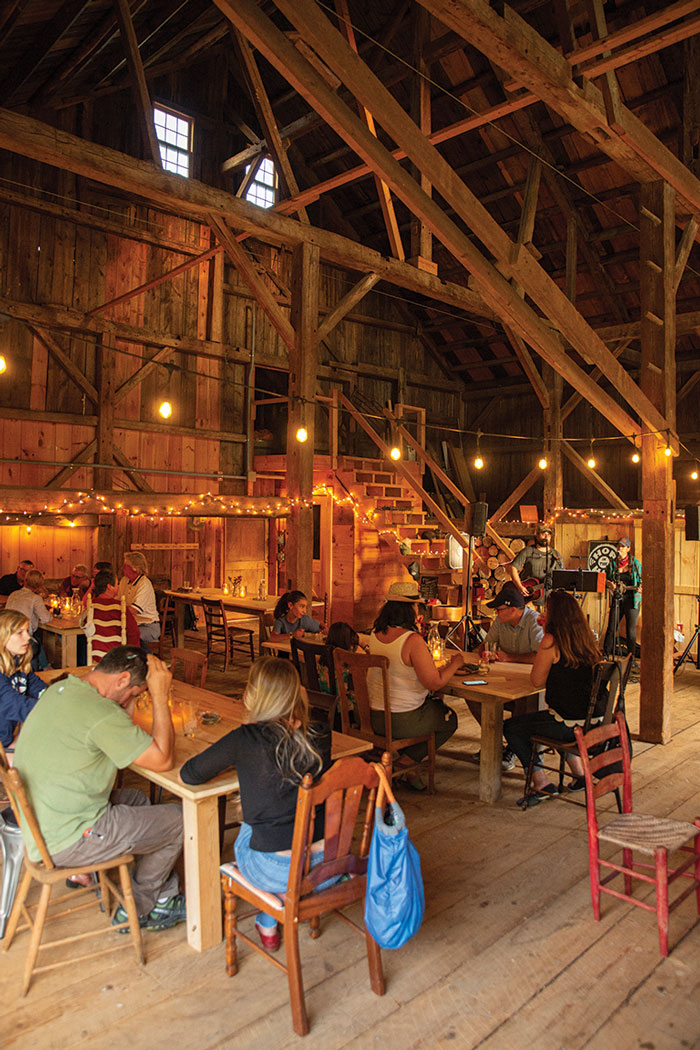
The community room fills up for art shows, playgroups, and canning workshops. And on Friday pizza night, locals crowd in to nosh on homemade pies and enjoy live music.
“When we first came here,” Taryn says, “we were so struck by how there was no place to get fresh healthy food and no place for people to sit down and have coffee with neighbors or share a meal.” Neighbors were heartened to see the then-twentysomething Marcuses breathe new life into the barn that had served over the years as a natural foods store, a milking parlor, and a self-serve produce stand.
“We think it’s our generation’s role to help create community in these rural areas,” she says.
The Marcuses are part of a wave of farmers who are cultivating community thanks to a vital assist from Maine Farmland Trust. The Belfast-based nonprofit works to protect agricultural land and make it more accessible for young farmers. A big part of that work involves helping farmers put agricultural easements on properties, which ensures their land will remain farmed forever. There’s an easement on the property that is now Sheepscot General, put in place when a previous owner retired. The easement will make it more affordable for the Marcuses to buy the property, which they’re in the process of doing after eight years of leasing it.
MFT has protected more than 60,000 acres of farmland and helped more than 200 new farmers gain a foothold.
Farms like Sheepscot General show “how making sure that new farmers can access land and capital to start businesses can help revitalize rural areas,” MFT’s president and chief executive Bill Toomey says. “Offering neighbors places to gather and connect is creating centers of gravity that are essential to strengthening the social fabric of these communities.”
At Toddy Pond Farm in Monroe, which also has an agricultural easement, Heide and Greg Purinton-Brown have launched a range of initiatives since they began leasing the property in 2014. In addition to raising pigs, sheep, and chickens — and making yogurt, ice cream, and cheese using milk from their herd of 100% grass-fed cows — they operate a farm store and summer camp. They also host farm stays where guests can stay in a renovated cottage, feed the pigs, watch the morning milking, and collect eggs from the chicken coop. Each of the Friday-night Grill and Chill dinners the couple launched this summer sold out with waiting lists, as neighbors and tourists clamored for homegrown food and live music, plus a chance to explore the farm, meet the animals, and see one another.
“It’s really about creating positive connections between farm, food, and community,” Heide says.
➤ To learn more, visit mainefarmlandtrust.org

Remember, Honor, Teach
[cs_drop_cap letter=”A” color=”#00155e” size=”5em” ]fter Bryce Kenneth Powers died while deployed for the U.S. Air Force, his mother, Cathy, agonized over the notion that he would be forgotten. Bryce, a senior airman, had yearned since childhood to join the military and enlisted just days after his high school graduation.
“It hurt so bad, it was hard to keep going,” Cathy says.
When Cathy discovered that a stranger was laying a wreath on Bryce’s grave at Arlington National Cemetery and saying his name aloud, everything changed.
“I was able to calm down and heal,” she says. “Seeing the wreaths let me know that people still think about my son and care about his service — it’s not just me. Pride replaced this poisonous anger I was carrying. It changed my life at a time when I thought my life was too ruined to get better.”
Cathy Powers is one of millions of military families who have been touched by Wreaths Across America, the Columbia Falls–based nonprofit that organizes volunteers to place wreaths at the graves of veterans in ceremonies everywhere from Washington County, Maine, to Normandy, France.
The effort began in 1992, when Morrill Worcester, a balsam-fir farmer in Harrington, made plans to lay 5,000 surplus wreaths at service members’ graves in Arlington National Cemetery.
NATIONAL WREATHS ACROSS AMERICA DAY, DECEMBER 14, 2019
2.1 million
wreaths will be placed on veterans graves at more than
1,700
cemeteries across the country
2 million
volunteers will help lay wreaths
When word of his plan got out, trucking companies offered to transport the wreaths, and veterans groups volunteered to lay them on headstones. The rolling tribute became an annual pilgrimage. In 2005, when a photo of the laurels on the white-granite monuments became widely publicized, Worcester was inundated with calls from people who wanted to join the procession and create wreath-laying ceremonies in their own towns.
Since then, Wreaths Across America has grown exponentially, fueled by a mission to “remember the fallen, honor those who serve, and teach children the value of freedom.” On December 7, the Wreaths Across America convoy will begin its 740-mile procession to Arlington. It will stop at dozens of towns along the way, greeted by locals who line the streets to welcome it. At the culminating event in Arlington National Cemetery on December 14, more than a quarter of a million balsam laurels will be laid on graves, with each service member’s name spoken aloud. It will coincide with wreath-laying ceremonies at more than 1,700 participating locations across the country.
Nearly 4,000 nonprofit groups sell $15 wreath sponsorships on behalf of Wreaths Across America and raise money for their own programs in the process.
Cathy Powers too has joined the fundraising effort. She is running 1,000 miles to raise funds to sponsor 7,777 wreaths — one for each day of her son’s life. She’s driven by her understanding of how meaningful each wreath is to families of those who died.
“It can’t bring these servicemen and -women back,” she says, “but it makes a difference.”
➤ To learn more, visit wreathsacrossamerica.org.

Bidding for a Greater Good
[cs_drop_cap letter=”E” color=”#00155e” size=”5em” ]ach August, classic car buffs descend on Owls Head Transportation Museum for the New England Auto Auction.™ The 42-year-old event draws more than 1,200 people who passionately support the museum’s mission — to preserve antique cars, planes, bikes, and artifacts, and educate the community about transportation history.
The auction is also the nonprofit’s biggest fundraiser, which it relies on to pay for everyday operating expenses. Since the museum started working with Thomaston Place Auction Galleries in 2013, auction sales have increased more than threefold. “The level of professionalism and energy that the Thomaston team brings has dramatically increased our capacity and ability to be competitive with collector car auctions across the country,” says Kevin Bedford, the museum executive director.
“When you get people who share a passion together in the same room, personally connecting with one another,” Bottero says, “a larger sense of mission and commitment arises.”

Owls Head is one of hundreds of nonprofit organizations that has looked to live auctions as a way to bolster fundraising, and tapped Thomaston Place to help. The team at Thomaston, led by founder Kaja Veilleux, vice president John Bottero, and Carol Achterhof call up to 50 auctions a year for nonprofit organizations free of charge.
Thomaston Place has helped a wide variety of groups reach their fundraising targets, ranging from $5,000 to $5 million.
“Maine’s nonprofits are having a powerful positive impact,” Veilleux says. “We want to deploy our professional expertise to help these organizations do good in the community.”
Many organizations find that live auctions more effectively fundraise than other outreach efforts, like direct appeals. “When you get people who share a passion together in the same room, personally connecting with one another,” Bottero says, “a larger sense of mission and commitment arises.”
Thomaston Place also helps nonprofits organize appraisal fairs. Veilleux and Bottero provide their appraisal services at no cost; the nonprofits earn proceeds from admission fees paid by individuals who bring in treasured items for valuation. Through another program, called Gifts for Good, Thomaston Place auctions art and antiques that have been donated to nonprofit organizations — for a significantly reduced commission — then transfers proceeds back to the nonprofits. With Thomaston Place’s international marketing reach, this program has allowed nonprofits to raise hundreds of thousands of dollars.
The Animal Refuge League of Greater Portland has used Thomaston Place’s Gifts for Good program and live auctions for nearly a decade. This year, the league raised $150,000 at the Fur Ball — its biggest fundraiser — nearly four times what the organization raised before working with Bottero and his team, says Patsy Murphy, executive director of the Westbrook-based league.
“John and Kaja really understand donors and how to get the crowd excited about what we’re doing,” Murphy says. “Their expertise in this field allows us to raise the funds necessary to carry out our mission and serve our Maine communities.”
➤ To learn more, visit thomastonauction.org.
Hope Floats
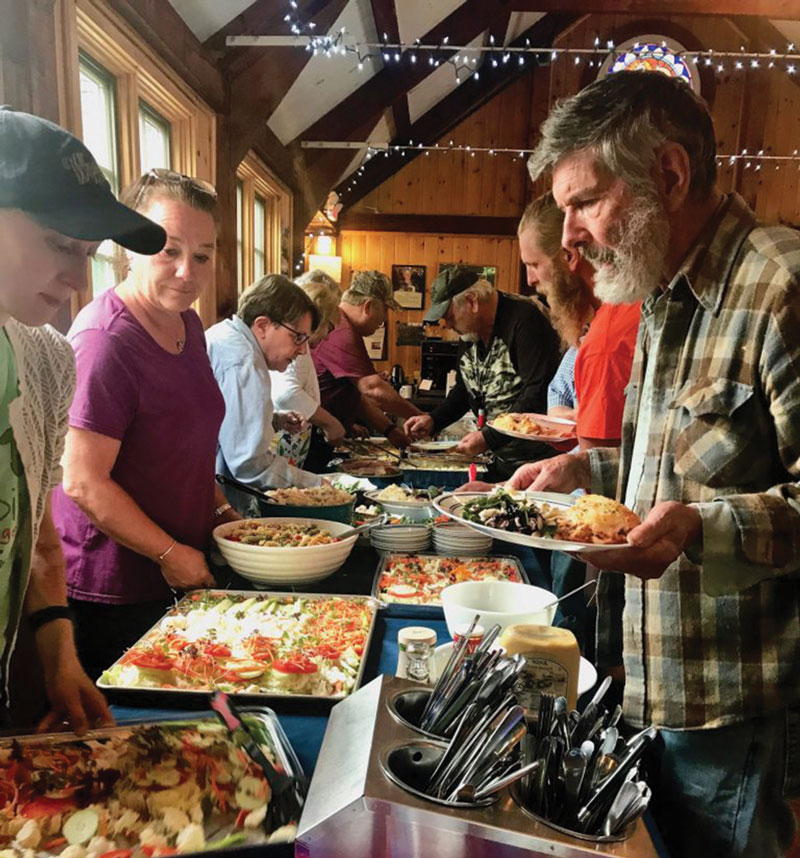
[cs_drop_cap letter=”F” color=”#00155e” size=”5em” ]rom the moment Brenda Clark stepped foot on Isle au Haut, she loved the feeling of peacefulness she felt there — surrounded by ocean, 6 miles from the mainland. Her love of island life hasn’t ebbed in the two decades since she moved. But now that Clark is 65, it has gotten more complex. Getting medical attention off-island can be expensive and time-consuming. “It can be a real hardship,” Clark says.
For Clark and other year-round islanders, Maine Seacoast Mission offers a critical lifeline. Its M/V Sunbeam V, a 74-foot floating support vessel, stops on 10 unbridged islands regularly providing food, fellowship, and healthcare. Sunbeam Steward Jillian serves meals. Island Outreach Director and Chaplain Douglas Cornman offers counseling, activities, and classes. Island Health Services Director Sharon Daley, RN performs routine health screenings, hosts telemedicine visits with primary care doctors and other medical professionals, and she comes ashore to visit homebound islanders.
Director Daley is also active with several island health workers in helping island elderly have the option of aging in place within their communities. Daley hosts an annual Island Elder Care Conference sponsored by Maine Seacoast Mission.
But as much as the medical attention, Brenda treasures the warmth the Sunbeam crew provides. “They’re so welcoming, and there’s no judgement,” she says. “They’re like family. They provide a place to gather as a community.”
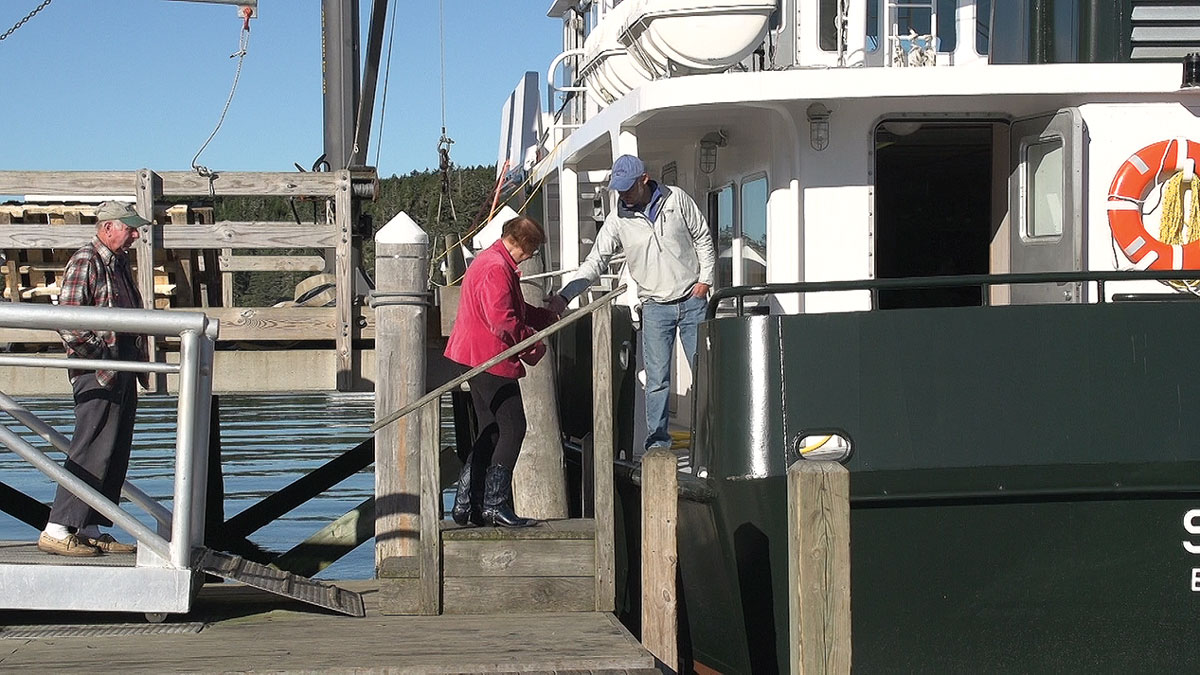
The Sunbeam is one of an array of services that Maine Seacoast Mission has offered since it launched in 1905. The Mount Desert Island–based nonprofit also provides wraparound community, social, and education services in coastal villages in Hancock and Washington counties.
In these isolated rural communities, says Mission President John Zavodny, crises like food and housing insecurity are amplified because there are so few means of assistance.
“We want to help create access to resources so that individuals can have real agency in their own lives,” he says.
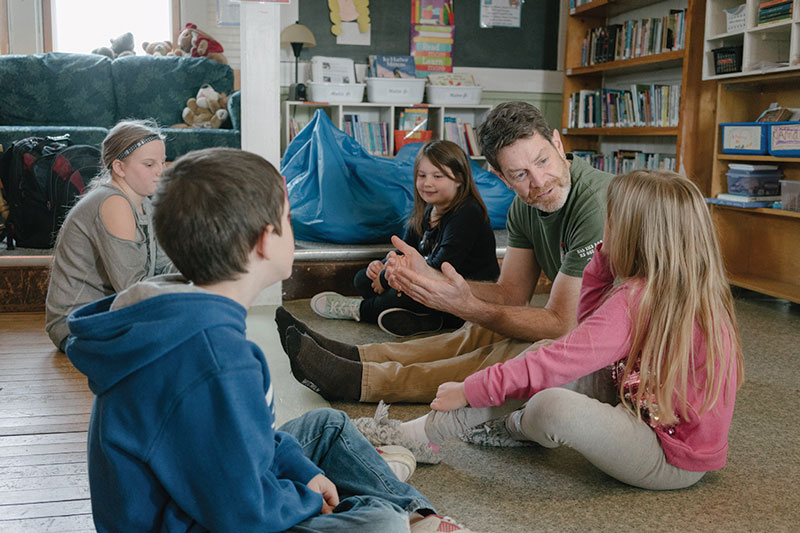
Nourishment is one of the biggest needs local families face. The Mission operates a food pantry, sends backpacks filled with food home with students, and serves free breakfast and lunch at its summer camp. Every Sunday, it hosts free Table of Plenty dinners at its Cherryfield campus, which include organic produce grown from its garden.
Education is another priority. The Mission education initiatives include everything from in-school and after-school programs, to STEM classes, college-prep, and teen leadership workshops. It also awards approximately 100 annual college scholarships.
President Zavodny says the Mission will continue to work with its communities to explore the best ways to serve, whether through telemedicine, education, housing rehabilitation, family services or whatever will have the most positive impact.
“Our programs evolve as the needs evolve,” he says. “But our commitment to the community doesn’t change.”
➤ To learn more, visit seacoastmission.org/who-we-are/our-story/.
Comprehensive Care
[cs_drop_cap letter=”F” color=”#00155e” size=”5em” ]or years, women on Mount Desert Island have been able to get routine health screenings at Mount Desert Island Hospital, but for more specialized treatment for gynecological issues, they had to drive an hour to Bangor or more than three hours to Portland. Now, they can find that care without leaving the island.

OB/GYN Dr. Jorge Peacher recently joined the hospital’s Lisa Stewart Women’s Health Center. He’s one of a handful of doctors in Maine specializing in urogynecology — the treatment of pelvic floor disorders — which impact an estimated one in four women over the age of 20. While this specialty is common in big-city hospitals, it’s rare at a small, rural facility like MDI Hospital, which has 25 beds.
The addition of Dr. Peacher is part of MDI Hospital’s ongoing efforts to add specialized services for visitors and year-round residents, as the local population ages and their needs evolve. Conventionally, specialists have been concentrated in the major cities in the southern part of the state. But as the area grows as a popular retirement destination, that’s changing.
In the last five years, the hospital has expanded its Women’s Health Center, added a Community Dental Health Center, launched a Palliative Care initiative, and opened a Weekend Care Clinic. Earlier this year, the hospital added a Cancer Navigator Program to help oncology patients and their families coordinate care and access resources for emotional support during and beyond diagnosis and treatment, as well as housing and transportation assistance. To bolster its behavioral health offerings this year, the hospital began offering outpatients music therapy, which has been proven to improve language, memory, attention, and quality of life for those with Alzheimer’s and dementia, as well as pain management.
“We’re responding to the evolving needs in the community,” says Arthur J. Blank, president and CEO of MDI Hospital. “If we can take the stress and inconvenience of travel out of the equation for people who need medical attention, we increase the chances that members of our community will access care and support when they need it, and resume their healthy lives sooner.”
The addition of Dr. Peacher — who treats incontinence, abnormal bleeding, and other pelvic floor disorders — means women now can get local help for painful, sometimes embarrassing conditions that they would have had to travel to Portland for.
“We have an opportunity to drastically improve quality of life for women who are living with these conditions.”
In some cases, pelvic floor disorders are related to pregnancy or trauma during childbirth. In other cases, they stem from age-related prolapse or food sensitivities. Too often, Peacher says, women delay seeking treatment either because they’re embarrassed or because they accept the symptoms as natural consequences of aging.
“In addition to pain and discomfort, these conditions can lead to a lot of isolation and have a devastating impact on a person’s work, family, and social life,” Peacher says.
“We have an opportunity to drastically improve quality of life for the women who are living with these conditions. And we’re so glad to be able to make that treatment more accessible in the community.”
➤ To learn more, visit mdihospital.org.
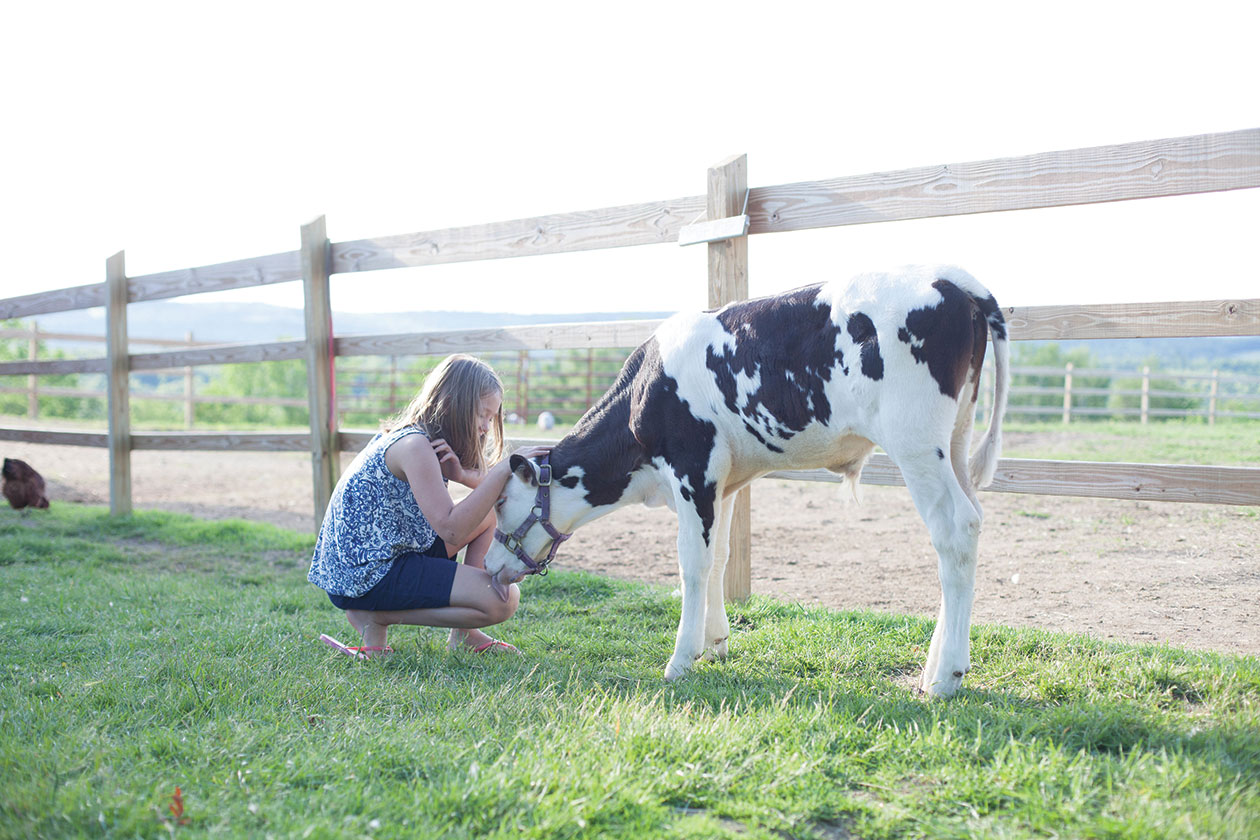
Safe Haven
[cs_drop_cap letter=”J” color=”#ff3300″ size=”5em” ]ust 15 minutes from downtown Belfast, atop a hill flanked by tributaries that feed into Marsh Stream, idyllic grassy countryside unfurls as far as the eye can see. Cows, horses, donkeys, sheep, and goats graze in the rolling fields near a quaint 1830s farmhouse while geese and ducks swim on a pair of ponds.
It’s the kind of bucolic setting that’s increasingly rare in Maine. And thanks to Peace Ridge Sanctuary, it’s also a safe haven for over 300 previously abused and neglected animals that are finally getting the care and protection they deserve.

Unlike conventional shelters that only take household pets like dogs and cats, Peace Ridge also takes in equines and farm animals like pigs, cows, goats, and sheep, most of which have been seized by animal control officials from circumstances they likely wouldn’t have survived. In a few cases, thoughtful individuals set aside funds for their animals to be cared for on site when they became unable.
Peace Ridge is one of only a handful of sanctuaries on the East Coast that serve a growing need. The organization has taken in over 1,100 hard to place animals since it began in 2001. A staff of eight along with many volunteers provide daily care.
Since 2001, Peace Ridge has taken in over 1,100 hard-to-place animals, and provided nourishment, medical attention, and a safe place to live out their days.
“It’s round-the-clock work, seven days a week,” says founder and director Daniella Tessier, “But it’s a gift to be able to help these animals, while preserving this beautiful landscape.”
The backstories of the Peace Ridge animals are heartbreaking. A number of the resident goats were discovered by animal welfare officers in an Aroostook County barn, living atop a pile of manure that had risen so high the goats were bumping their horns against rafters. Many were pregnant, most were malnourished. A 25-year-old Belgian draft horse was found tied to a tree in the middle of a blizzard — covered in lice, with infected hooves, and skeletal at only half his ideal weight. After refeeding programs and veterinary care, these animals are all thriving. They spend their days roaming in green pastures and retire to clean, safe stables to rest.
“It’s amazing to see the transformations,” Tessier says.
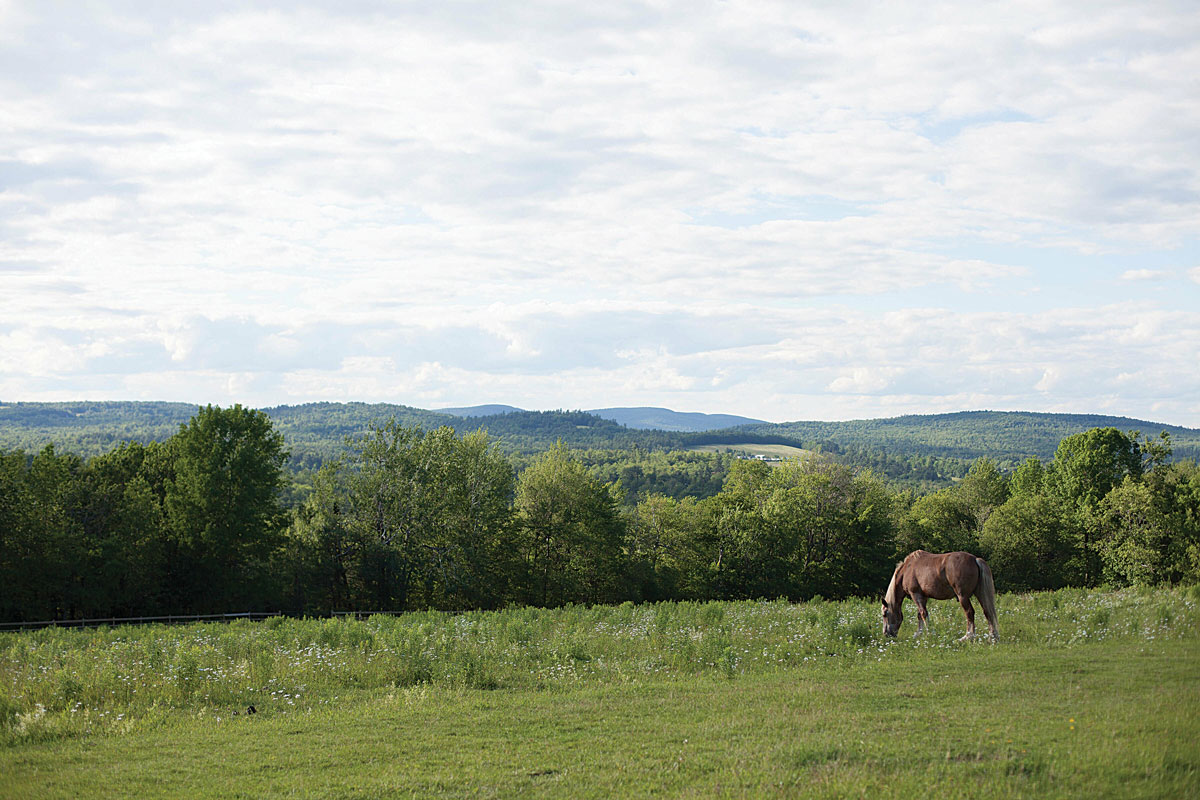
Peace Ridge’s 800-acre site — a former hay and tree farm that donors helped the nonprofit organization buy in 2015 — is open for scheduled tours, special events, and educational programs. Peace Ridge also devotes more than 650 acres to wildlife conservation. Peace Ridge runs entirely on the generosity of donors. They have launched a campaign to create an endowment that will allow the organization to remain secure and productive for future generations. Peace Ridge hopes to find the special people needed to invest in the longevity of the sanctuary in this way.
“When we had an opportunity to buy this farm, we were so happy to help preserve this breathtaking place while providing a special refuge for these animals,” Tessier says. “We want to make sure it remains here forever.”
➤ To learn more, visit peaceridgesanctuary.org.
Support System
[cs_drop_cap letter=”F” color=”#ff3300″ size=”5em” ]or most people, it’s hard to fathom the challenges of getting medical attention in Haiti. Many hospitals lack basic sanitation systems and clean water for drinking. Some facilities lack backup power, so if there’s an outage, lifesaving machines stop working and surgical procedures continue in the dark. Patients often must pay for medication up front, even though most earn less than $2 a day. Periodically, hospitals shut down because they don’t have the space or manpower to take on more patients.

Since 2001, a Maine-based nonprofit called Konbit Sante has been working to change that. Founded by Portland doctor Michael Taylor and his wife, Wendy, Konbit Sante works to strengthen and expand the capacity of Haiti’s health system, improve quality of care, and increase access to preventive care in Greater Cap-Haitien, an area in northern Haiti that’s home to more than 400,000 people. With offices in Falmouth and Cap-Haitien, Konbit Sante works with Haiti’s Ministry of Health and partners with four local healthcare facilities.
Konbit Sante means “working together for health” in Creole.
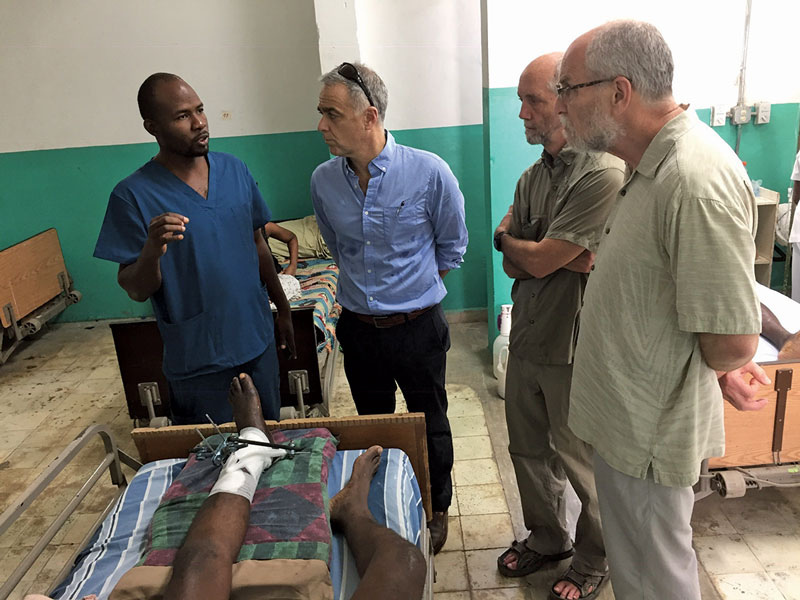
Konbit Sante’s approach— and what distinguishes it from many other aid organizations — is to work alongside Haitian doctors and public health officials to identify problems, develop solutions, and provide tools, training, and support to ensure lasting change. Konbit Sante maintains a full-time staff in Haiti who work to facilitate change on a day-to-day basis. “It’s much more sustainable for us to strengthen the existing healthcare system than to offer one-time aid from afar,” says Nate Nickerson, Konbit Sante’s executive director. The organization supports brick-and-mortar projects, including the construction of new primary care and pediatric clinics, and northern Haiti’s main spinal rehabilitation facility. It has made critical infrastructure upgrades to ensure that hospitals have clean water and reliable electricity. It supports the salaries of Haitian health workers who provide community outreach, including vaccinations and prenatal care. Konbit Sante sends shipping containers of medical supplies to Cap-Haitien that contain everything from wheelchairs to X-ray and EKG machines.
Konbit Sante helps hospitals develop basic information systems so that providers can collect and conduct research, identify trends, and improve care.
At Justinien University Hospital, for instance, Konbit Sante has been working with staff to review pediatric mortality cases and identify factors that contribute to preventable deaths. The reviews have informed improvements that have resulted in dramatic reductions in the mortality rate of premature infants. “We don’t come in with a particular agenda,” Nickerson says. “We come in with the idea that by sitting down and understanding the situation, we can come up with better solutions together.”
➤ To learn more, go to konbitsante.org.
A Heaping Helping
Good Shepherd Food Bank fights hunger in Maine.
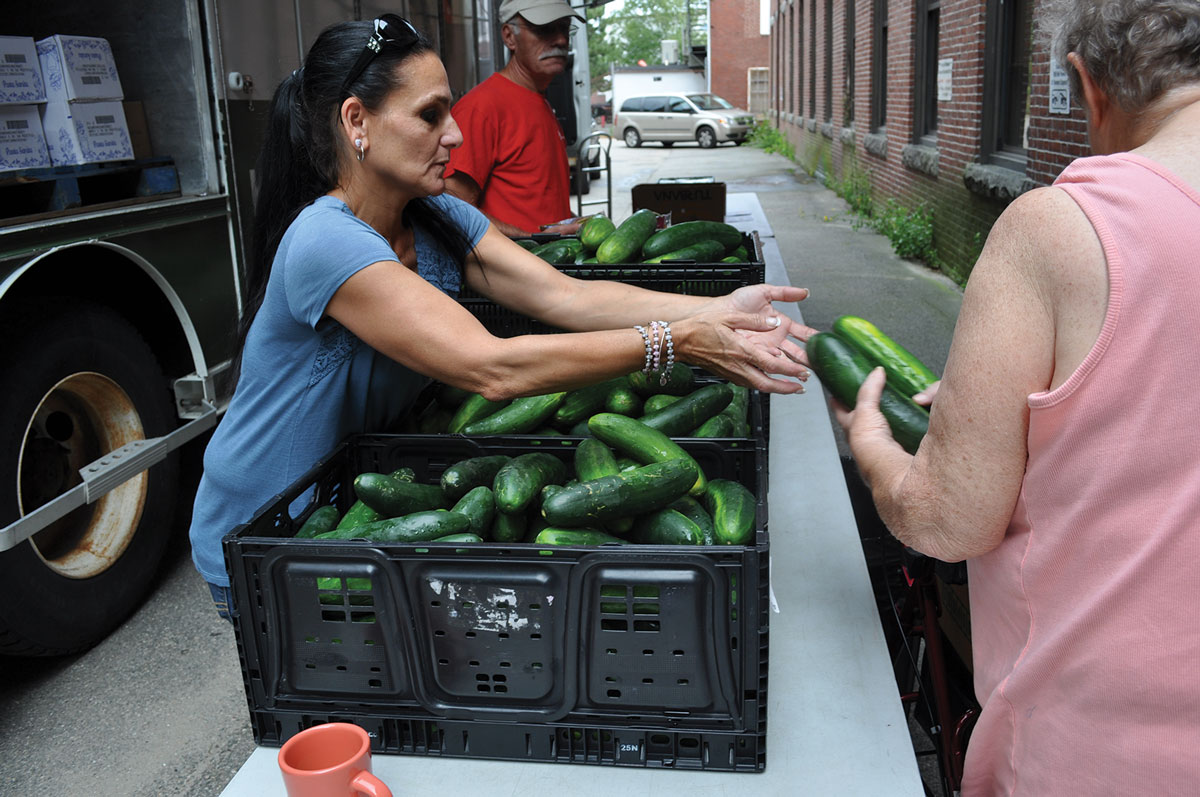
[cs_drop_cap letter=”S” color=”#00155e” size=”5em” ]mall as Maine is, it has some pretty staggering numbers when it comes to hunger. More than 170,000 Mainers face food insecurity, which means they don’t have consistent access to enough nutritious food for an active, healthy life.
For so many of these people, local food pantries, churches, and community and health centers offer critical lifelines with groceries and hot meals. Many of these organizations get the bulk of the food they distribute from Good Shepherd Food Bank, an Auburn-based nonprofit organization that has been working to end hunger for nearly three decades. With the help of Good Shepherd, some 400 programs across the state distribute more than 30 million pounds of food each year to Mainers facing hunger.
Here’s a closer look at hunger in Maine and the sweeping scope of efforts Good Shepherd Food Bank is making to address it.
1 in 5
178,000
37%
200
400
13.6%
25 MILLION
each year
30,000
70
70
Mainers Feeding Mainers program to distribute fresh, locally grown food to families in need
5,000
Since its founding in 1991, Good Shepherd has expanded its reach, to provide nourishment and nurturing that addresses issues exacerbated by food insecurity. Through its Community Health and Hunger program, for example, Good Shepherd connects Mainers with community resources they need to contend with health issues caused by lack of proper nutrition, like type 2 diabetes and hypertension. Through its Cooking Matters program, Good Shepherd’s partners offer cooking and nutrition education to help Mainers prepare healthy meals on a tight budget.
Good Shepherd’s Food Mobile Program uses a refrigerated truck to deliver perishable and non-perishable food to communities in need throughout the state.
➤ To learn more, go to feedingmaine.org.


